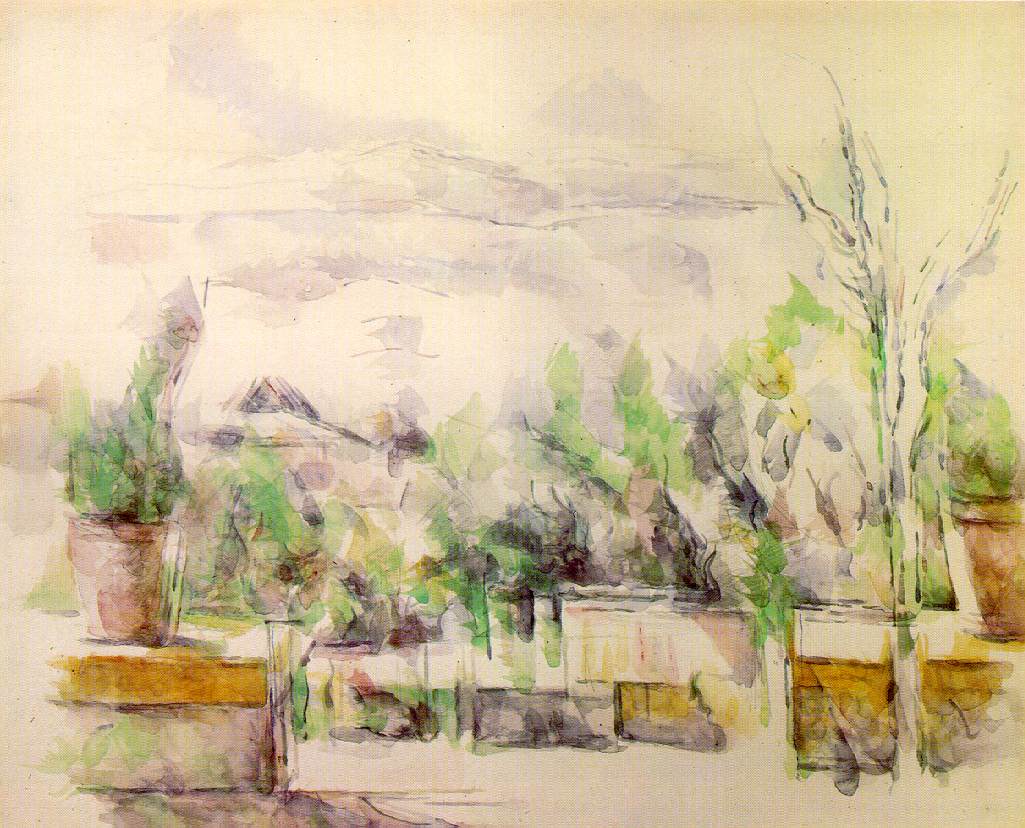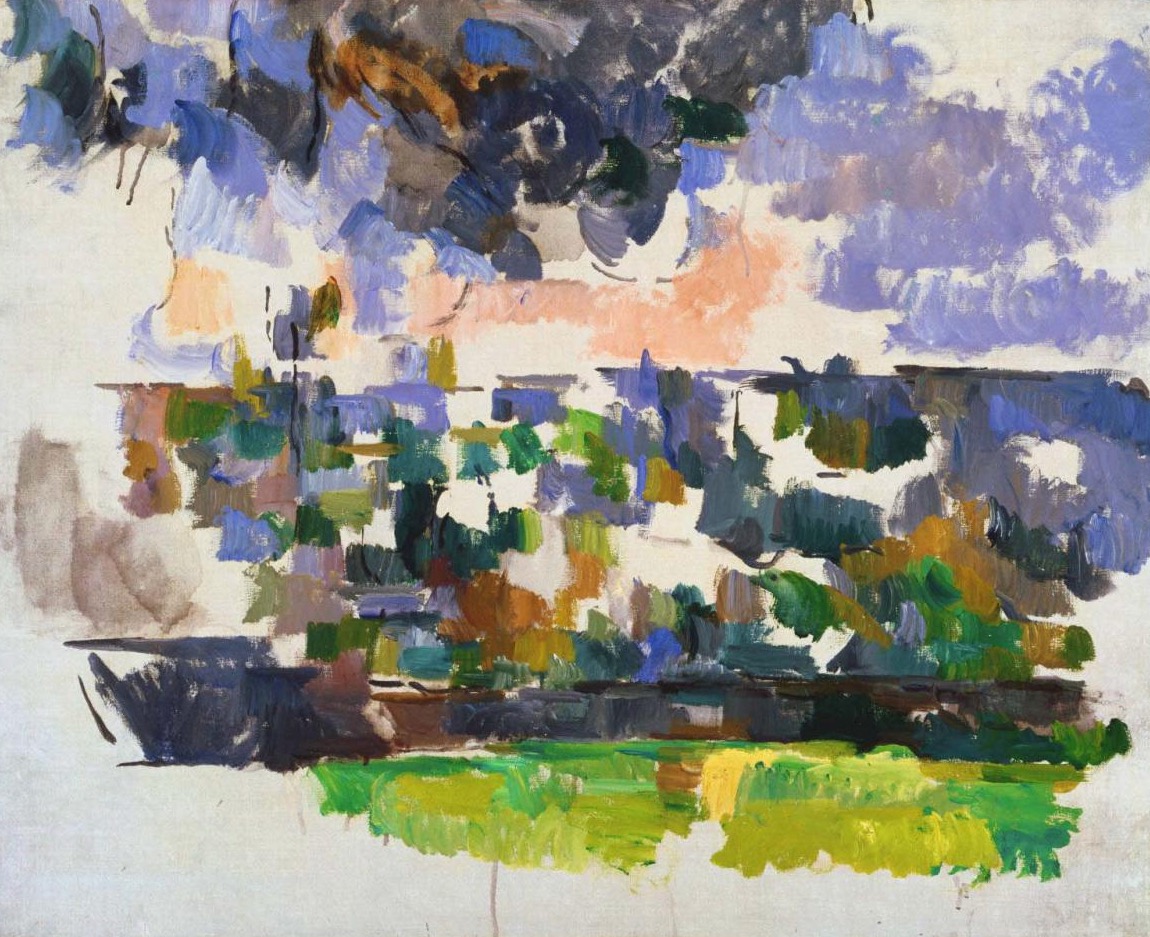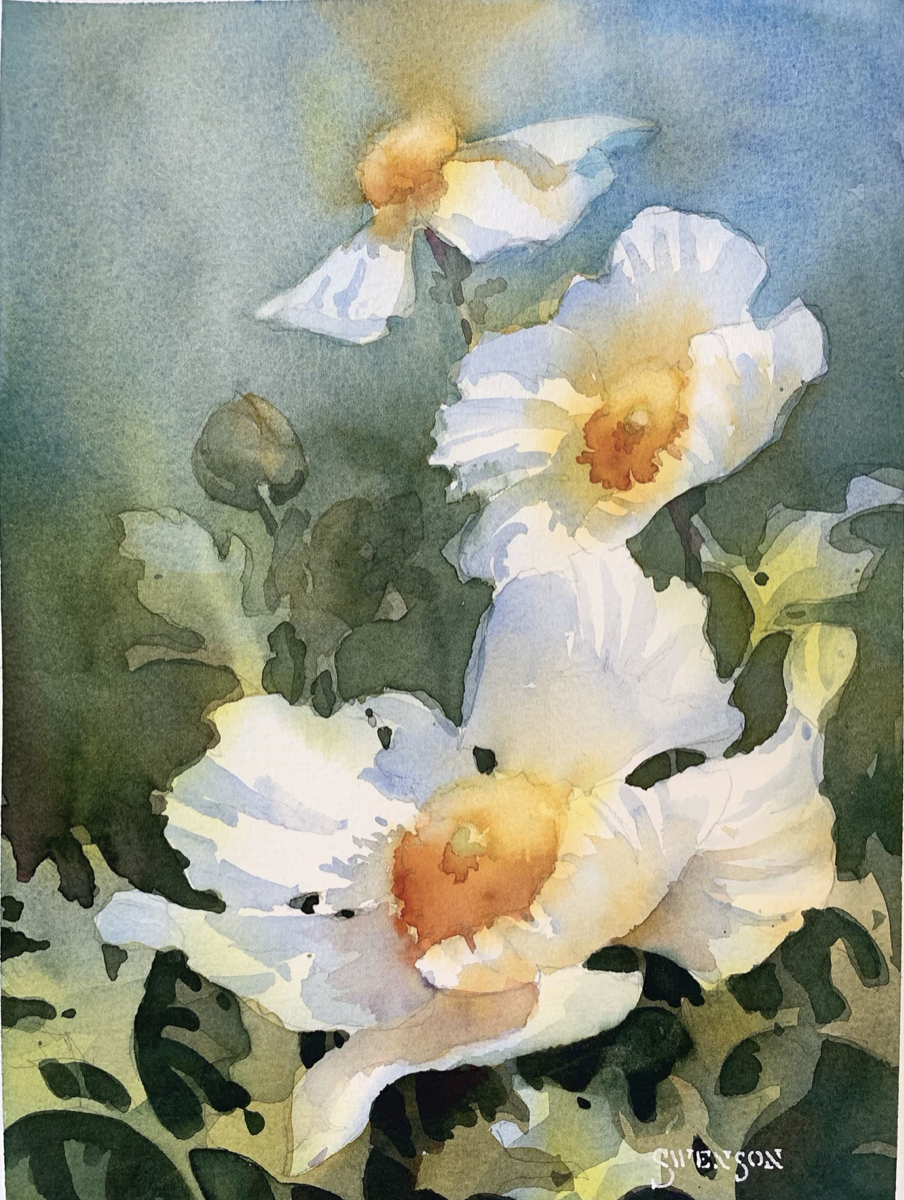Once a strictly agricultural or aristocratic endeavor, gardening grew in popularity among the middle class around the 19th century. Average people poured their newfound leisure time and resources into designing and tending their own gardens simply for the pleasure they provided. Among artists, they became popular painting subjects.

Paul Cézanne
1902-1906, watercolor over graphite, 17 x 21 in.
The Morgan Library & Museum
Near the end of his life, Paul Cézanne (French, 1839-1906) increasingly translated his deep feeling for nature into a series of color patches so abstract that, in hindsight, they seem to anticipate the abstract art of a far later era. One of his latest works, The Terrace at the Garden at Les Lauves depicts the view from the artist’s studio terrace north of the city of Aix and about 20 kilometers west of Mont Sainte-Victoire. Chosen for for its panoramic view of his beloved Provence, this commanding site dominated his attention during his final years.
Writing of the tortuous slowness of his later “researches,” Cézanne reveled in views of “the same subject, seen from a different angle,” with which “I would occupy myself … for months … by leaning once a little more to the right, once a little more to the left.”

Paul Cézanne
ca. 1906, oil on canvas, 25 3/4 x 31 7/8 in.
The Phillips Collection
The careful balance of warm and cool tones in these works creates a sense of depth and atmosphere, with bursts of bright green foliage punctuating the more muted palette. The artist’s focus on structure, form, and composition is evident in every brushstroke, a testament to his dedication to capturing nature while also pushing artistic boundaries with innovative techniques.
In Glowing Watercolors, Brenda Swenson shares her techniques for observing the beauty, color, and glow found in everyday scenes and demonstrates how to bring those elements into your paintings.








